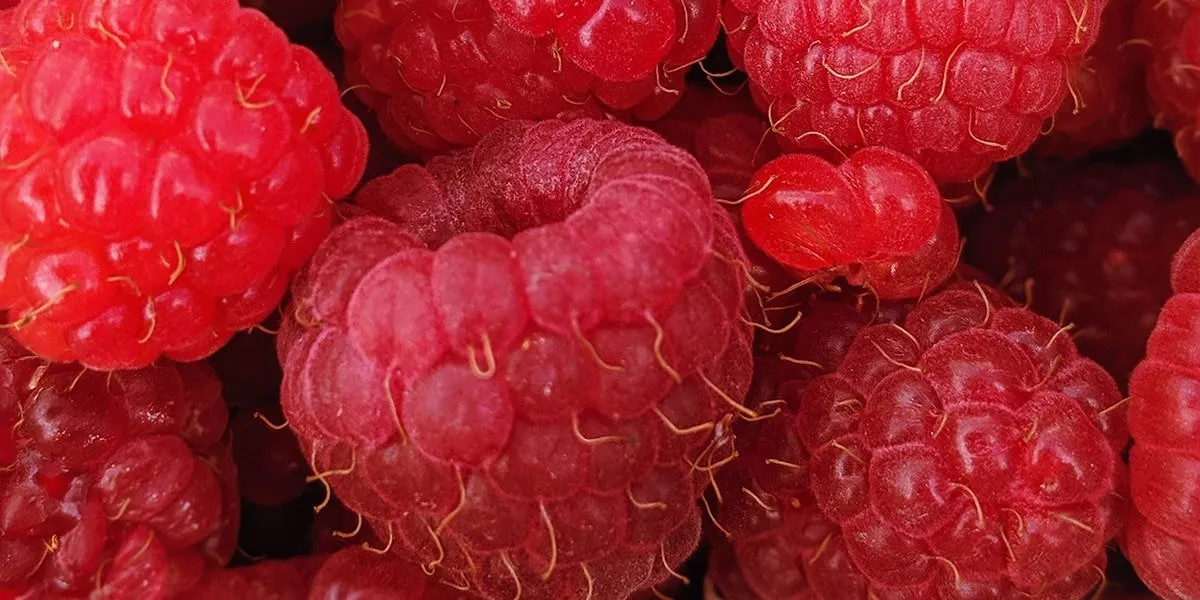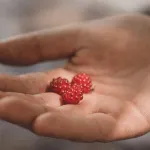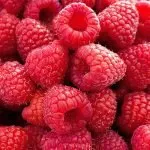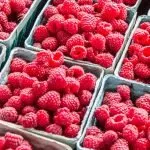Ever noticed those little hairs on a raspberry? They’re not exactly hair, but the leftovers of the flower. The hairs are likely to serve an important purpose in protecting the fruit. Some might call them styles, but that’s not the official name for them.
According to the North American Raspberry & Blackberry Association (NARBA), the little hairs on a raspberry are called pistils. The hairs are safe to eat. They are leftovers of the female part of the raspberry flower, likely helping the fruit protect itself from insect damage.
Hairy raspberries are completely normal and perfectly edible. They do not impact the flavor or texture of the berry in any way. In fact, they might even be beneficial because of their rich fiber content.
Why Are Raspberries Hairy?
Raspberries are ‘hairy’ because the hairs or pistils in between the fruit are what remains of the flower. The hairy pistils strengthen the many sections of the raspberry, but also help deter insects and other pests.
Whereas other fruits will shed most of the leftovers from the flower, the raspberry plant (Rubus idaeus L.) is self-fertile and has more to gain from active protection against insects. At the same time, bees know to find their way around the pistils, which will help the pollination process.
Essentially, the hairy leftovers of a raspberry serve as protection. Having those hairs will increase the odds for the raspberry to survive and reproduce as a species. For humans, there’s nothing to worry about. The hairs in between the fruit are completely harmless to us.
Raspberry Hairs Are Edible
It is completely safe to eat the hairy raspberry pistils. The tiny little hairs in between the raspberry fruit are perfectly edible. Just like the raspberries themselves, they are healthy and full of fibers.
As long as you clean the exterior of the fruit thoroughly so no dirt remains, it should be safe to eat raspberry hairs. Make sure you wash them under cold running water before consumption.
If you’re not sure if your raspberry is ripe yet, look for signs of ripeness. Indicators include a bright pink-red color, fullness, and roundness. Avoid any unripe green-colored berries. Raspberries are very perishable and can only be eaten for a few days, after which they can start showing fuzzy mold.
Raspberries Are ‘Aggregate Fruits’
If you thought a single raspberry was only one fruit, think again. They are in fact a so-called aggregate fruit. Every little ball of raspberry is part of a cluster of many individual sections. These are called drupelets, and the raspberry pistils or hairs hold the drupelets together.
The visual aid below helps to make you see it a little clearer in your mind:
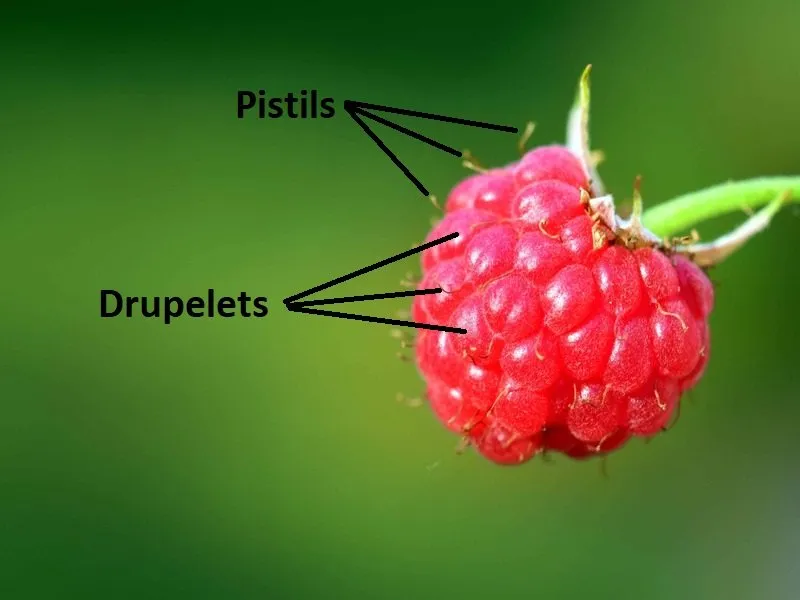
In essence, the raspberry plant has many ovaries in the flower, as opposed to one. Adding many seeds to many ovaries creates all these sections, which are in fact their own little fruit. The fibrous and hairy pistils are what remains of the female part, the flower.
Other Hairy Fruits You Might Enjoy
Perhaps you’re aware of the fact that raspberries aren’t the only popular hairy fruits available. There are many more. Some have edible hairs, while others are simply part of the inedible skin of the fruit.
Here’s a list of some of our favorite hairy fruits that you can buy in a supermarket near you:
- Blackberries: The darker, equally healthy counterpart of the raspberry. Part of the same family of fruits (the genus Rubus) and created with the same mechanisms. It’s also an aggregate fruit and a popular berry.
- Strawberries: You might not have realized that the other popular red berry is also hairier than people think. The tiny little (and edible) hairs on strawberries are called ‘Febriles’ and can alert the plant when the fruit is being touched. They’re all over the exterior of the fruit, but they are barely visible to the naked eye.
- Kiwis: Possibly the most famous hairy fruit, since the skin of this tropical delicacy is covered in short hairs. The fuzzy bits on the skin are not actually hair, but trichomes. These are random, hair-like extensions coming out of the cell walls. The hairy skin of a kiwi is technically edible and very rich in fibers, but not very tasty.
- Peaches: King of the fuzz is the peach, a sweet tropical fruit that is known for its unique skin. Much like the hair on raspberries, peach fuzz or hair exists to deter insects and other unwanted intruders.
- Coconuts: While we wouldn’t recommend eating the hard skin of a coconut, it can be quite hairy-looking. That hair is actually just fibers, and it’s meant to protect the fruit and coconut milk within. It actually has many uses in products, both traditionally and commercially.
